Latest questions:
Trending questions:
Hot questions:
Disrupting Your Company's Core Business
With the accelerating blurring between healthcare, technology and consumerism, what are some of the techniques that successful incumbents are using to self-disrupt before they are disrupted?

76 months ago
5 answers
It is very hard for a successful organization to be self-disruptive. Much easier for a failing organization to be willing to literally start over. In either case, it is important to always look outside to understand the needs of consumers and the market changes. Tools like Convetit can help a lot to accelerate learning by tapping the knowledge of experts.
Rick,
Healthcare, technology and consumerism are each fueling disruption in their own right. My comments center on the intersection of these three.
- Healthcare (industry dimension) - reflects new business models, revenue/cost drivers, different competition and/or players
- Technology (scale, new value/features, security, speed) - digital, data/analytics, access to information
- Consumerism (customer view) - buyer wants, expectations, 'business buyers' using a consumer lens)
Insights below are based on:
- Experience growing revenue at top B2B services/tech firms (through initiatives and within BUs).
- A broad lens, top down -- strategy/ bus transform., ops improvement, mktg, product dev, consulting/client mgt
- Objective that ideas can work in any context (generally relevant)
Three practices key to successful 'self-disruption'
- Use a 'system of capabilities' to foster an integrated, adapting approach to change
- Make the value of disruption visible to customers
- Apply diverse talents and experience while fostering the desired culture
(1) Use a System of Capabilities
Any business looking forward at disruption needs to have insights about the nature of change. Best is to describe 3-4 models (future state context) about the industry, competitors and triggers of success. Reasonable depth of understanding about the industry changes is a pre-requisite for conclusions about 'how to self-disrupt'.
Then, select and focus on a group of capabilities to reflect or drive the disruption. These must reflect some end-to-end value stream or business flow (revenue and cost model, through to the customer). Don't just try to disrupt based on a change in supply chain, customer experience aspect or technology solution. Design something with a scope that's 'functional'. A good 'test' is seeing there's sufficient coverage so it could be 'outsourced' to another firm, or acquired from a competitor.
Here's an analogy from jazz and classical music. Pieces are often broken into sections, let's say 8 bars. In composing, there's a choice about which instruments will play a section - for example, saxophones in jazz. The 8 bars could 'stand alone' as an iteration. Beginning, middle, end as a variation of the theme. Instead of saxophones, an accomplished composer could substitute the trumpets/trombone section. Or in classical music, strings, woodwinds, brass, etc.
'Composing' includes bringing these 8 bar sections are together, so they fit a piece. Similarly, business operations are based on integrated, well-aligned and feasible groups of activities. Optimal if these are interchangeable, or could adapt in tempo (speed), volume (intensity-effort) or other qualities.
(2) Make the Value of Disruption Visible to Customers
This 2nd point intends to ensure there's feedback from the 'market'. Some advocate that customers should not be aware of the change, that a 'seamless' or undisturbed experience can also be effective. I'd encourage to pro-actively include specific 'tests' or feedback expectations, so it's clear whether the investment in disruption is actually causing changes outside your organization -- be intentional.
Your team should plan for 'moments' that convey the disruption's incremental value to the customer (or other stakeholders affected). Analysis techniques like "Jobs to Be Done' or 'Service Blueprinting' can be especially useful.
(3) Apply Diverse Talents and Experience, While Fostering the Desired Culture
The skills, abilities and collective efforts of people matter. I'm concerned with disruption beyond tweaking a commodity, or some technology evolution that's automated (analytic breakthroughs matter, but people come into play somewhere).
There's a high probability that a more diverse team will fare better in bringing out positive disruptions, compared to a uniform group. Strive to combine a staff of legacy employees with experts from other industries, effective facilitator/consultant to moderate activities, plus available resources for specific research or decision-making/problem solving. Mixture of tenure, country or global perspective, age, work experiences, etc. also matter. This includes a mix of people who reflect customers or other stakeholders along the value chain.
Too often, I've encountered companies who undervalue expertise from adjacent industries, demographics and age groups. Beyond impacts from full-time employees, seize on contractors, consultants, service providers, partners and other types or 'staffing' or resource acquisition.
Firms talk about bringing innovation, productive disruption (change/agility) and authentic or unique value to their customers. This requires progressive staffing and inclusion of staff through leadership.
Mitigate risks, operate faster and motivate employees to thrive, while embodying the desired culture post-disruption.
For an individual regular disruptions are required to avoid a “tunnel vision” and related behavior risks. In our modern times it gets more and more complicated to get a break, as thanks to connected smart devices employees read and answer their emails not only inside their regular working hours, but also before and after, including on week-ends and holidays. Even the classic TV-evening does not give the required escape, as tablet and smart phones became a regular “second screen” to switch the eyes between TV and computer.
Important possibility for disruption are the employee’s holidays or also business travels. “Traveling educates” is not only a phrase, but new locations and meeting other people are always a source of inspiration. The individual connects the new impression with his or her actual life and tasks. After the time off, such new ideas can make the person re-think his or her tasks and, hopefully, make such more effective.
The company’s HR department shall ensure that employees take their annual holidays and furthermore that over-time gets limited. Employees with a “private life” receive input from different settings. Inspirations and fresh ideas get back to the company and due to this, the employee gets more valuable for the organization. Bill Gates understood this relation and once said: “I choose a lazy person to do a hard job. Because a lazy person will find an easy way to do it.” He formulated it provocative, because being outside the office does not mean being lazy, as leisure time can be used actively.
Especially today, where jobs get automatized by robots and AI, the company shall be aware that on positions where we need human employees, we have to treat them as such and not similar to machines. If not, humans are vulnerable for failures and errors. Humans treated as humans, develop the skills to protect themselves against negative psychological biases
I can share what I have done to disrupt myself. I invested time and money to go out and do long term international travel. During my travels I developed the practice of running at sunrise. On days I don't run first thing in the morning I eat breakfast or tea/coffee outside facing the sunrise. Next, I got an Audible.com account so that I would listen to at least 3-4 books per month while traveling or exercising. I subscribed to some podcasts on subjects I wanted to learn about. I listen to podcasts when I want something more laid back to listen to but still insightful.
When I listen to books, I make sure to write down key take-away notes each day. Getting my thoughts and ideas on paper has been big. I think the key to disrupting yourself is to expose yourself to new places, people, culture, and information. Even take a new route to work or switch up your gym location. If you can't do long term travel then consider a intensive courses like Tony Robbins UPW, or John DeMartini Breakthrough Experience. Both had a profound and transformative impact for me!
All of this has led to an improved emotional IQ, more courage, and multicultural communication skills. It's becoming more important to have mastery of communication skills and have a problem solving critical thinking mind with a high emotional IQ. One of my favorite audio books is by T. Harv Eker "The Secrets Of The Millionaire Mind". I recommend doing the incantation exercises, saying the mantra's while touching your head and your heart. He recommend's creating an account for 10% of your net income to go toward education. This can be for books, online courses, or intensive workshops. I truly believe that the ROI is worth it if you take action and apply the information in these books and courses! Because it's a percentage of income, the more you make the more you invest!
At an organizational level this comes down to how the members of the business are 'being' and creating a practical 'space and rhythm' to be in place in order to synchronize this effectively - the quality of everything created or manifested in an organization, first exists in the quality of vibration in the energetic body/field of each individual and their ability live imaginary. From that cosmic creative essence, the culture is developed. Which magnetizes the organization, shifts the paradigm and attracts < disrupts > new customers through universal law + authenticity. I have helped leaders raise their spiritual intelligence, awareness and free expression re-connection, which allows them to begin marketing in the NOW/present time - tapping into a level of alignment. This creates the 'disruption you speak of' because it shifts the frequency of the operation into a new paradigm of complete nowness/timelessness.
Due to the nature of social media < and its speed > and observing how new brands are disrupting the market in content/context ; it is essential to create an environment where transparency across the entire organization is valued and the context of the mission can be embodied and expressed freely. This upholds the entire company/business to integrity at all times and being an embodiment of the culture ( the brand truth, the expression of joy/love/appreciation ) = which equals self evolution { actualization } + company evolution = planetary evolution + increased ROI. When emotions can be freely expressed and released at a grassroots level of an organization, the energetic body of an organization synchronizes to the universal patterns of nature (as do the employees/members of the body). Technology is a quantum evolutional tool, if used correctly.
I have used Instagram marketing + training as an evolutionary tool for self disruption + business disruption - in both personal terms and in global brand terms. It is through facilitating + integrating Quantum Creative Expression at all levels this shift occurs.







